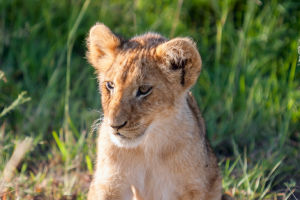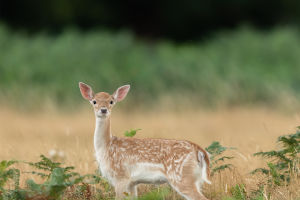Kingfisher is also called Jade. Its whole body is emerald blue, brown ventral, usually in a straight posture, perched next to the water, a long time motionless, waiting for fish and shrimp to swim through, whenever you see fish and shrimp, immediately in a rapid and fierce posture, straight into the water, with the mouth to catch.
Sometimes, it can also be seen flying with wings 5-7 meters above the water, as if hanging in the air and looking down at the water. The nest of the kingfisher is often built in the sandy soil of a field bank, dug into a tunnel, about 60 cm deep.
The emerald feathers of the kingfisher shine due to the refraction of light. In the past, the king's costume and the "phoenix crown" were decorated with the feathers of the kingfisher, and the color did not fade even after a long period of time.
Many people think that the kingfisher is a freshwater bird that lives along rivers. In fact, there are many members of the kingfisher family. Some kingfishers live by the sea. The banded kingfisher and the spotted kingfisher are typical seabirds.
Banded kingfishers are found in the coastal areas of North and northern South America. Banded kingfishers often live in the bushes and tree tops along the shore. The banded kingfisher's repertoire is extensive, with salmon, shrimp, and crab being among its delicacies.
Before hunting, the kingfisher hovers above the water in search of underwater prey. Once it finds its prey, it dives down silently and quickly to catch it. The banded kingfisher is a migratory bird. Each year in August, they begin their migration. They return to their homeland in April and May.
The banded kingfisher inhabits holes in the ground along the coast. The ground caves are usually up to 2.4 meters deep. The underground caves are dug by the female and the male together. Once everything is ready, the female lays about five to seven eggs, which are placed just at the bottom of the cave. After about 23 days, the baby kingfisher is ready to emerge.
The Spotted Kingfisher lives in the southern parts of Asia and Africa. The male's entire body is predominantly black. There is a wide ring of white feathers on the neck.
There are also white feathers on the tail and wings. The lower side of the wings is also white. The female is very similar in color to the male. Only instead of a ring of white feathers on the neck, the female has just a tuft of white feathers on her chest.
Another distinguishing feature of the females is that their necks and legs are black. Spotted kingfishers also have a habit of digging holes to lay their eggs. However, their holes are not as deep as those of the banded kingfisher. The holes dug by the Spotted Kingfisher are usually only 30 cm deep. The top of the tunnel is the female's maternity chamber. Spotted kingfishers can lay two to six eggs in a clutch. Incubation and feeding of the young are done by both the female and the male.
Kingfishers have beautiful plumage and can be used as decorative items. However, it has a taste for fish, which is not good for fish production.
If you want to raise a kingfisher, you should note that a kingfisher raised from a young age can be raised on a stand with a thin elastic rope tied to its legs, which is good for keeping its feathers clean.
While adult birds caught can only be raised in cages, and they are considered masters if they can survive for a month, they often die of diarrhea and malnutrition, so there are still difficulties to overcome in raising them.


